|
These are Nicola's examples of Temari Balls- they were beautiful. We had a brilliant workshop on Saturday with Nicola Davis of The Twisted Thread. I think most of us had never heard of Temari Balls before the workshop. Nicola explained a little about their history to start. Temari has origins in China and then spread across Japan. A long time ago Japanese ladies would use waste strips from kimono making to make balls and children used them in games. This would have started with ladies from upper class backgrounds as the fabrics were very expensive. In the 19th century when cotton became available, more people started making them but eventually this went out of fashion as the use of rubber for making balls became popular. The craft has become more popular in recent times and temari ball making is part of Japanese culture and heritage. As such we should respect the Japanese tradition when we make temari balls. We (there were 14 of us in the workshop) started with a polystyrene ball which Nicola had already completely wrapped with wool. We then wrapped it with polyester thread, so that the ball was completely covered. This had to be random wrapping and at first it seemed that it would never be completely covered. However we all managed it reasonably quickly. We chose our own colours which was quite time consuming! We then had to do a bit of measuring using a strip of paper so we could divide the ball into sections - imagine an orange. The top and bottom were the North and South Poles and we added an equator, all marked with gold thread which we sewed onto the ball with a temari needle which was long and bendy. Here we are constructing our balls using pins as markers. We made a star pattern. Perle cotton (number 8 I think) was used for the stars and again we all took time to choose our favourite colours. The pattern looked very complicated at first but Nicola was an excellent teacher and soon had us all sewing the design correctly. I made mistakes, but mostly managed to unpick them. Some of our members went home and ordered more polystyrene balls to continue making them. If I ever make another one I will use rice hulls stuffed into the foot of an old pair of tights and only natural fibres as thus would be more sustainable. I will use mine to hang in my Christmas tree. Here are some of our nearly finished balls. You can find Nicola's online workshops here: http://thetwistedthread.co.uk/ Here is her website: thetwistedthread.co.uk This is email address: [email protected] And finally here is Tosca the puppy waiting patiently for her walk!
Thank you Nicola for a great day. Here is Tereshina Roberts, talking to our guild on Saturday. It was an excellent turn out with 26 of us looking forward to this long awaited talk. Tereshina is passionate about this subject and she certainly made everyone of us think hard about how we can live more sustainably. Some of it was very hard to listen to - but Tereshina was able to give us some positives about the best way forward.
First a little bit of background about Tereshina, She was born in Brazil and both her grandfathers were tailors. At that time most of her clothes were made by local seamstresses. She moved to Malawi after meeting the man who would become her husband in the Amazon. In Malawi there were no clothes shops (yes really!) and everyone made their own clothes. So Tereshina began to make her own clothes in a country where women wore dresses and Tereshina only had trousers when she arrived. Here in UK our consumption of clothes is very high. Tereshina was able to explain that we love a bargain as our brains are wired to make us feel good if we feel we are getting a good bargain. So this contributes to the high consumption. She explained very much better than I can how this works. (I also apologise for anything in this account that is not accurate - it will be my fault, not hers). She was able to back up all her statements with figures and reports. Another reason for this high consumption is the very cheap price of clothes. Many clothes are made in sweatshops in parts of China where the workers are low paid and she explained that this is modern day slavery. If the price of clothes made in sweatshops was increased by just 1% it would mean that the workers could earn a decent wage. To tackle climate change we need to reduce this consumption to 10% of what we use now. This is obviously a huge reduction. 60% of clothes are now made from artificial fibres. The process to make much of this is energy intensive, using loads of water and harmful chemicals. Polyester makes up a large percentage of this and although it is durable and very easy to wash and care for, it sheds microfibres which can end up in our water. Recycled polyester sounds good but it is often poor quality and sheds even more microfibres. Viscose is a fabric that feels like silk but is made from cellulose which comes from forests. In the process of making it, 70% of the wood is wasted! It is also a very polluting process and that is why we don't like it being made here, so we prefer it to be made in China and India. Bamboo might sound better but its production method is very similar to viscose. Tencel and Lyocell are a little better but it is hard to check out the process accurately when it is made in China. Tereshina went on to talk about natural fibres but sadly there are problems with most of these too. Cotton is a great fibre that we all love - it is comfortable and dyes well and looks good ......BUT.... Cotton pickers are not treated well and it uses lots of water (as do most other fibres) and then we must consider the dyes and how these are produced. Cotton that is grown in Africa is very good as they have a suitable climate. However there are no subsidies there as there are in America and other cotton producing countries, meaning that African cotton is expensive. Linen is a very good fibre but as it is very labour intensive, it is also expensive. Happily, wool is another good fibre as long as it is local and not produced on the other side of the world using questionable farming methods. Here is Tereshina's list of what we can do to help reduce climate change. 1. Reduce our consumption to 10% of current consumption 2. Use what we already have 3. Make our own clothes 4. Knit 5. Share stash - will it outlast us?! 6. Only buy durable 7.Mend 8. Wash clothes less And lastly...... If a piece of cloth is big enough to wrap 3 beans, keep it and use it (Japanese advice) If you feel you are too small to make a difference just think of spending a night with a mosquito! We buy an average of 26kg of textiles per person per year Make your clothes loveable Finally I would like to thank Tereshina for her fascinating talk which made everyone in the room think and consider and discuss how we can improve our practices and spread the word. A group of 6 of us from guild went to the Guild Exhibition at Leigh Spinners Mill on 6th September. It was a bit like the song as we went on a train, tram and guided bus, leaving New St at 10 am and arriving at the mill around 1pm. Thanks to Kate and some assistance by her brother in law we arrived without any problems at this amazing building. We quickly found the cafe with the help of a member of staff (or he might have been a volunteer) who helped us negotiate the old fashioned lift. We had lunch and met Jane in the cafe. The staff were lovely. We found the exhibition on the 3rd floor and spent nearly 2 hours admiring the skills and creativity of many of the members. Here are some of the photos I took, not in any particular order. Of course we checked out our members' exhibits first! Apologies to Rachel and Sarah as I don't seem to have photos of your exhibits
We arrived back at home around 8 o'clock, very tired and hungry. It was a good day with lots of time for chatting and knitting too. I hope Charlotte has finished her Dad's scarf in time for his birthday! Its been a busy month for the guild with CoCoMad, a guild talk about a woven wedding dress and Yarningham... CoCoMad 4 of us went to CoCoMad this year. This year it was back after a break of 2 years because of the pandemic. Sarah brought her brilliant gazebo, Tina brought her giant trolley and the blackboard sign which she writes with such skill. Carolyn brought her foraged fibre and baskets and created so much interest with visitors who were keen to have a go at making cordage from some of her fibre. Lynne came and joined us too and I had my trusted spinning wheel. Sarah bought her scarf loom and warped it up there and started to weave. We all helped children to make friendship bracelets and we even had one child who loved it so much she kept returning with friends to teach them too! We had some heavy showers but we stuck it out and the evening was lovely. Sarah and I finally let around 7:30 pm after a very long day. We did think it was a good day as we had a lot of interest in our crafts and maybe some new members for September. Here are some images from the day with apologies to Carolyn as her head is missing and I can't work out how to change portrait to landscape correctly. How I wove my wedding dress by Louise Cottey This was our guild talk on 9th July. It has been long waited for after several postponements. However it was well worth the wait. This is a very short version of her story and any mistakes are mine. She told us the story of her weaving life. After her degree she worked and volunteered at Cold Harbour Mill in Devon and she went to New Zealand and lived there for some time and had a chance to work with a weaver there. She's been involved in many different art projects which sometimes used the environment. She has designed woven fabrics for numerous projects and people. She wanted to weave her own wedding dress and she talked about the long process of sampling and eventually choosing the weave and fibre she wanted. She showed us her samples along with samples of her amazing weaving. She had problems with the mohair fibre in her warp which kept breaking and she was weaving an inch and then having to stop to mend the broken warp threads. She ended up having to work for hours during the night to finish the fabric in time to give to to her dressmaker. She showed us a photo of her wearing it on her wedding day and also brought the dress for us to see. It was beautiful and obviously worth all the blood, sweat and tears that went into it! She started her business called The Loom Shed just before lockdown but she has made it work and now has a lovely weaving space with space for teaching. She doesn't weave to sell at the moment (could this be because she now has a 4 year old son?!), but makes an income from teaching which she really enjoys. A fascinating talk - thank you Louise. the photos below show a little detail from her wedding dress and also some of her woven fabric which was inspired by colours seen at West Bay near Bridport. Yarningham 10th July
Tina spent Saturday at Yarningham and on Sunday Rachel and I went. It was very warm in the marquee but we had a good day. The best part of demonstrations is meeting and chatting to like minded people.I certainly did that at Yarningham. I will just mention a few of the lovely people I met there. Jo came and spoke to me about coming back to spinning after many years. She had got out her old traditional wheel and wants to spin again. We suggested she come to guild in September for help and advice and in the meantime to treat herself to some fibre (after all she was in the right place to get some!) that she really loves so she will feel truly inspired to succeed. Then there was Louise who has just decided to treat herself to a wheel from Fibre Hut. She was so excited when she had a go with my Ashford Joy and really got the idea of spinning very quickly- maybe she will choose a Joy instead of the one she had planned to buy. Jute from the Printing Works in Moseley came to speak to me too. She said that they have 2 large looms in working order and wondered if anyone from our guild would be interested in using them as its a shame that they hardly ever get used. I spoke to Laura from @AdventuresinYarnCraft and she lives locally and she is considering coming to join us in September. That would be great, we look forward to seeing you, Laura. I must also say hello to Margery and Sylvia who work for the NHS who came to try out our weaving loom. They were so excited to be weaving -see below And lastly the lady who asked me to help her with the yarnwinder. She then told me about the weaving kit she had just bought and when she showed it to me I said 'Oh its just a piece of cardboard' and she laughed so much when she realised she has paid £15 for a piece of cardboard and we both laughed a lot!! Here are some of the photos from our World Wide Knit in Public Day in Kings Heath Park. There were about 20 of us there and we stayed for about 3 hours, after experiencing every kind of weather! Eventually the rain beat us but not before we had a good chat, and saw tatting, knitting, spindling, lucet work and probably lots more. There were people from our guild and from Stitches and Hos and also the Knitting and Crochet Guild.
Saturday 14th May was our Annual Open Day. It was a great day with lots going on. Our members worked really hard to set it up the night before and in the morning before our visitors arrived. Here are some of the activities going on during the day.
Weaving demonstrations with Janet and Gemma with lots of visitors having a try. Dyeing activity with Sarah. A great activity for everyone, using a hammer to pound a flower and transferring an image onto fabric. I love the way Sarah was sticking the flower to wide masking tape to keep it in place while hammering. I saw some lovely images, especially the pansies. Ruth and other members were spinning and teaching visitors how to use the wheels and spindles. We had lovely home made cakes and cups of tea. Also a sales table with wool, buttons, cards, books, plants and seeds for sale. There was an exhibition of members' work and a competition open to members, with the theme of make do and mend. Everyone voted for their 3 favourites and well done to Sarah, Gemma and Margaret who won the top 3 places. Our meeting this month was an informal day. This means we all bring along a project that we are working on and then chat with everyone while working and drinking tea and eating cake! Although I must be honest and say that there was no cake as our cake making members were not there so sadly we were cake-less. We usually have cake and if you are coming along to a meeting cake is always very welcome especially as that will be your subs for the day! However I thoroughly enjoyed the relaxed atmosphere and we all stayed until the end so I think we all had a good day. I thought I'd include photos of some of the varied activities taking place. Gemma is helping Tamada with a braid on a tablet weaving loom. Tina showed us her box of very special yarn that she had ordered from a Ramadam wool club. It is a small business called @abuelitafibercompany. She has packages to open each day of Ramadam and these ones in the photo are hand dyed with natural dyes. Lots of info about Ramadam and the individual dyers is included too. Lovely!
Textile Tasters in March was a very busy day. We welcomed several new members and everyone was kept busy with the mini workshops. Jackie taught a group how to make Dorset buttons and there were some beautiful examples to aspire to! Carolyn showed some members how to make cordage from natural materials. She brought some little baskets that she had made during lockdown using fibres from her garden Janice introduced some members to needle felting and even taught some children how to make simple shapes safely. Rachel showed members different methods of casting on and off
It was good to meet again at the Meeting House in February. 4 members talked about their Summer School experiences last year and we were even able to provide a link for a member to join us on zoom, thanks to Tina We went to Writtle College in Essex in August last year and stayed for a week. We stayed in the student halls of residence and had all our meals provided in the canteen. There was a full programme of lectures and events in the evenings as well as our daytime courses. It finished with a trade fair, exhibition of our work and a gala dinner. Charlotte talked about her course which was Elementary 4-shaft weaving with Janet Phillips. She enjoyed the course and showed us her samples although she admits she hasn't continued to use her new weaving loom at home as she is worried she might not get it right! She has done 2 weaving summer school courses so I'm sure she would be able to do it. I talked about my course which was Azure to Midnight: Indigo Shibori Dyeing with Jane Callender. I loved my week in Writtle and the course was exciting. Jane was a fabulous and patient teacher and I produced some lovely samples. Our room was changed several times which wasn't ideal but we managed. Shibori is fabric which is stitched in a particular way and then dipped in an indigo vat. It can be dipped any number of times to produce a deeper colour. It must be sewn with very strong thread and knots used at each end to secure the stitching when it is pulled tight. Jane is an expert and she has written a whole book about the process with beautiful photos of her amazing work. We used silk, various weights of cotton and linen. we had 3 vats - a natural indigo, a chemical indigo and a weak vat for paler colours. The first 2 photos show some of my work after stitching and before dyeing. The 3rd photo is from Jane's display and the last one shows some of my samples and Jane's book Then Rachel talked about her course - Knitting: Entrelac and beyond with Alison Ellen. Alison has also written books about her craft and Rachel showed us some of her samples knitted during the week. She said she enjoyed the course and likes experimenting with her favourite pastime. The first photo shows Tina with one of Rachel's sample on the screen, which could be seen by our zoom participant. The next one is Rachel at the fashion show, showing off her work (Rachel's words). The last one is from Alison Ellen's display showing part of a jacket and her book- my apologies for poor photo. Tina then went on to talk about about the course that she and Kate did. It was Inkle Weaving: The basics and beyond with Anne Dixon. Tina bought the book to help her understand the technique as they found they were expected to work independently. They made braids with their names on and Tina went on to more advanced work. The first picture is from Anne Dixon's display, the others show Tina and Kate's work. Judith also took a course at summer school -Foundations in Spinning with Amanda Hannaford. She wasn't able to be at the meeting but I know she learnt lots from Amanda. I know Amanda is a brilliant and knowledgeable tutor as I worked with her on A Fleece a Day in 2017. The first photo is a beautiful lacy top in Amanda's display. I think it was spun and knitted by Amanda.
|
AuthorWendy Simpson , guild member since 2014. Started as a spinner, then got hooked on natural dyes and now I'm learning to weave Archives
January 2023
Categories |

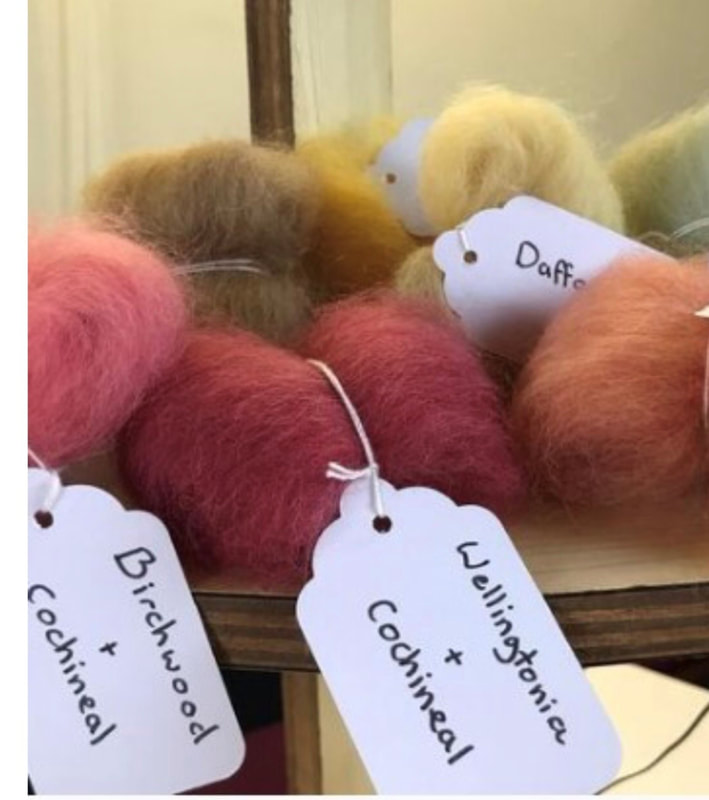















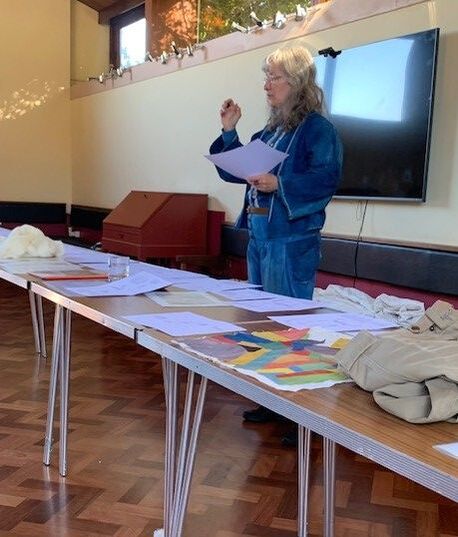











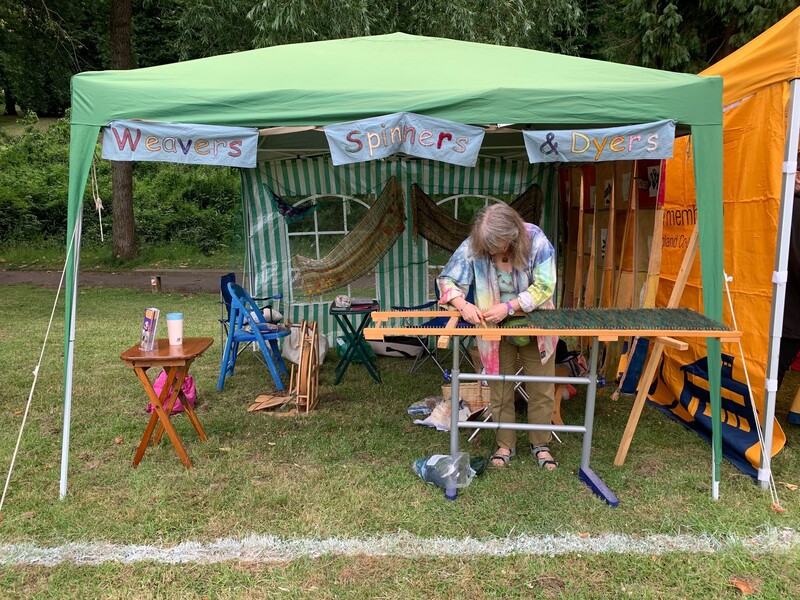
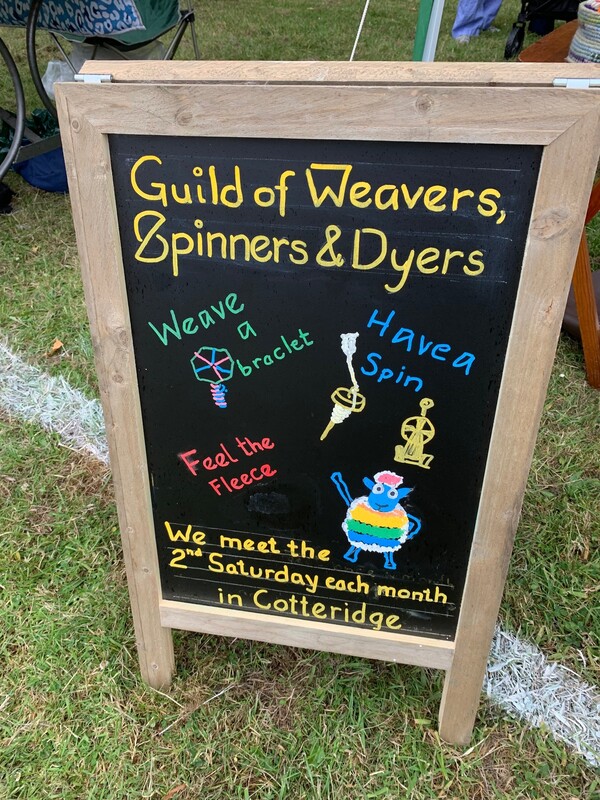
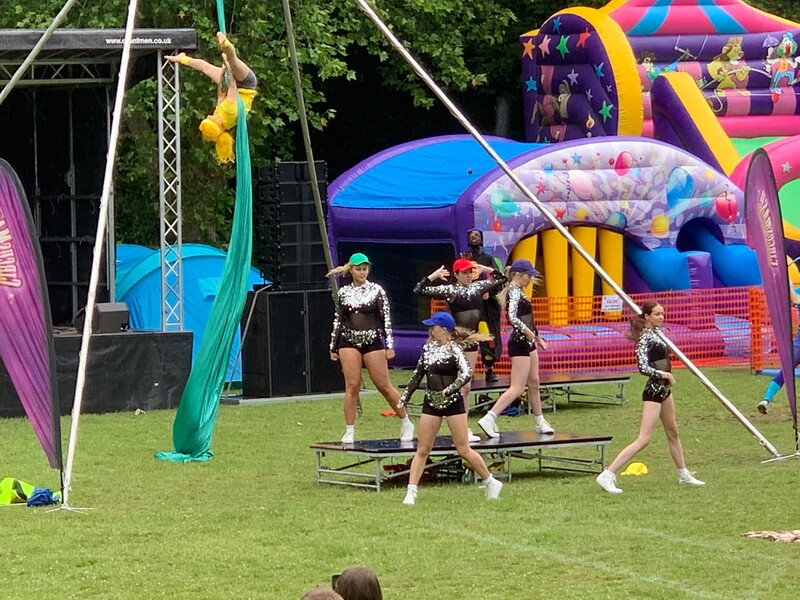
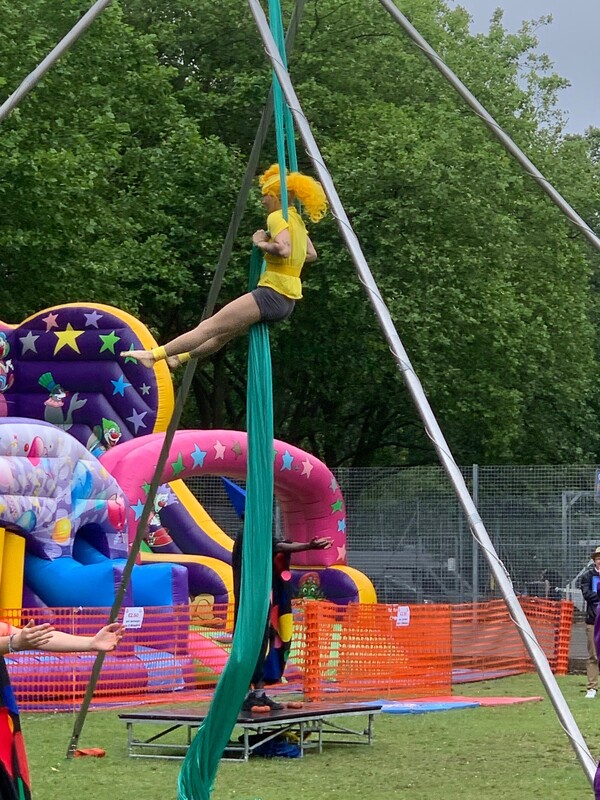
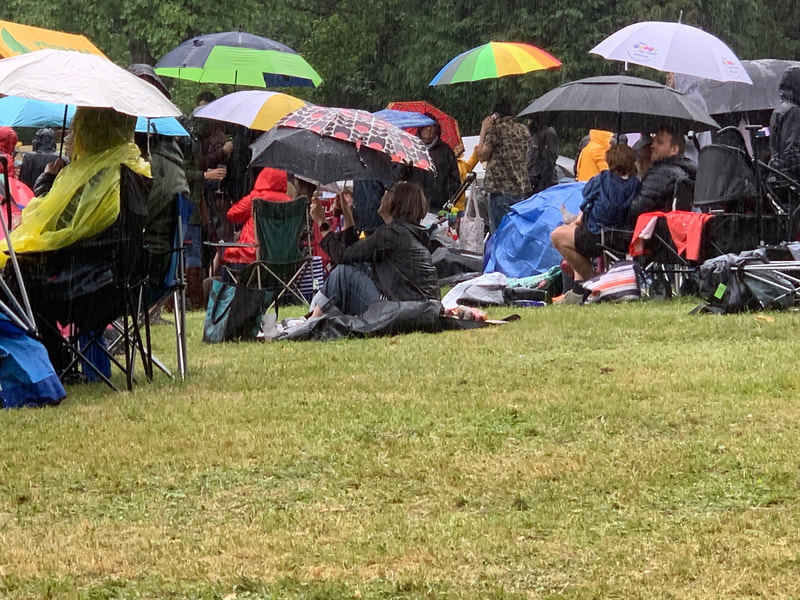
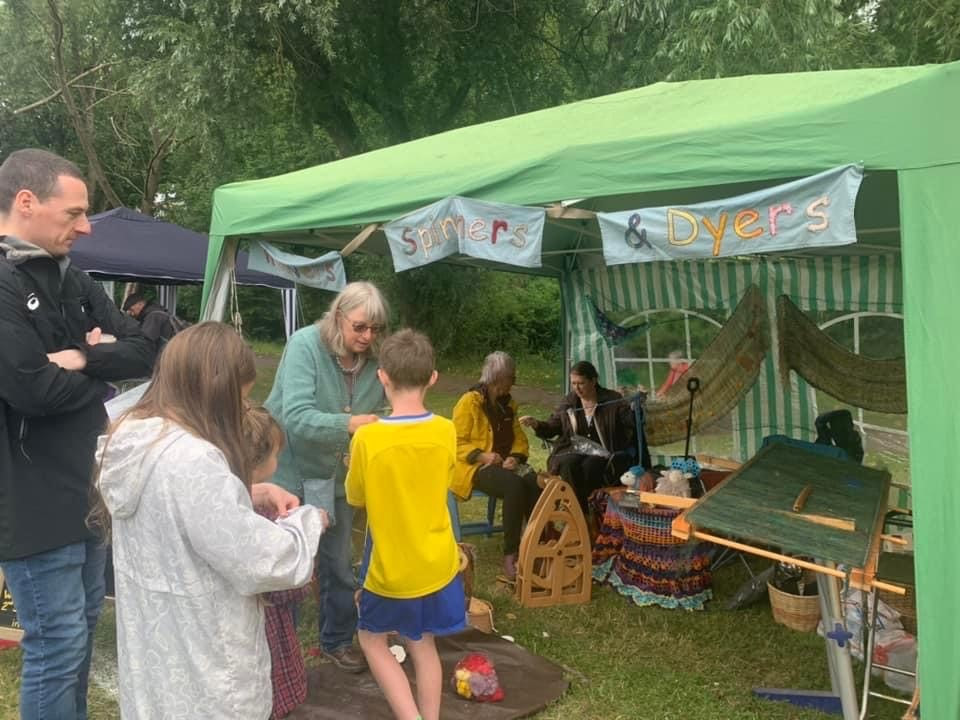
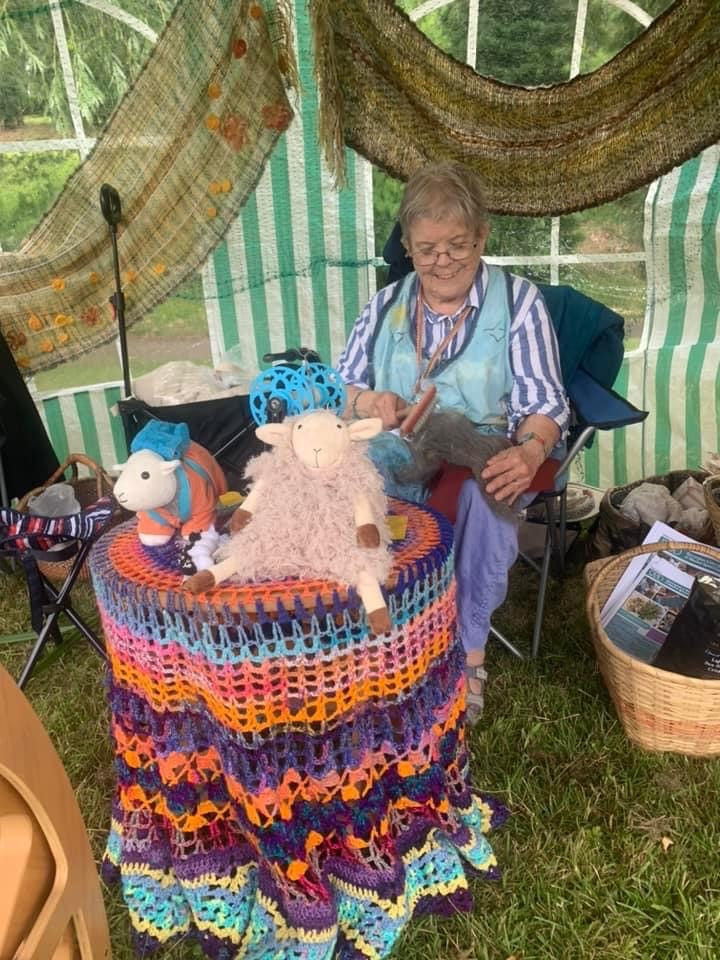
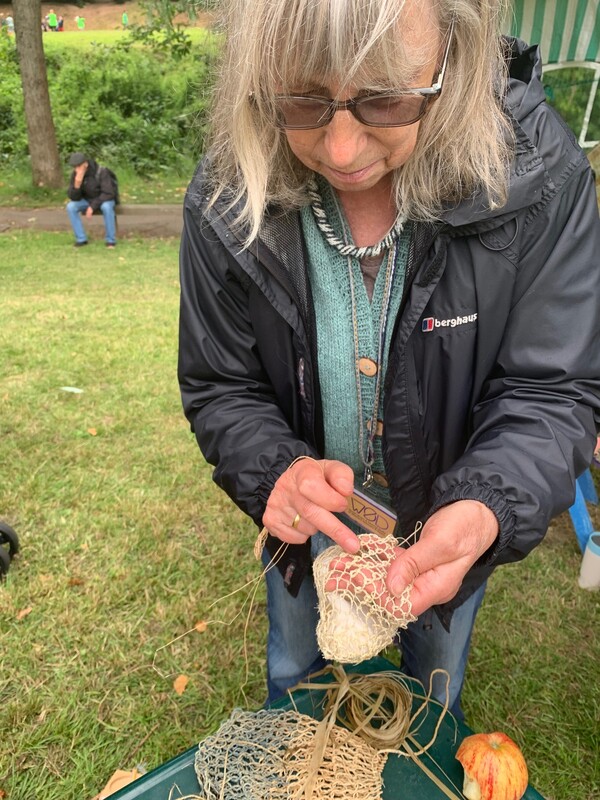
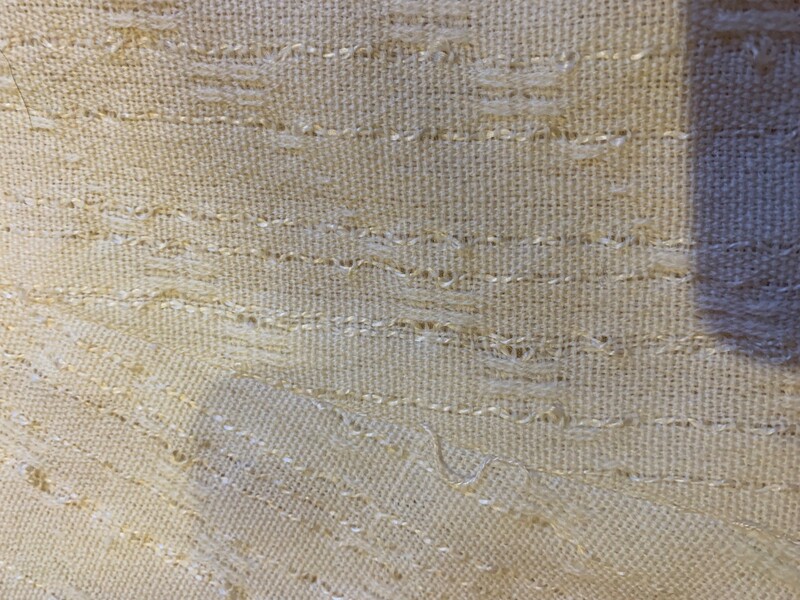
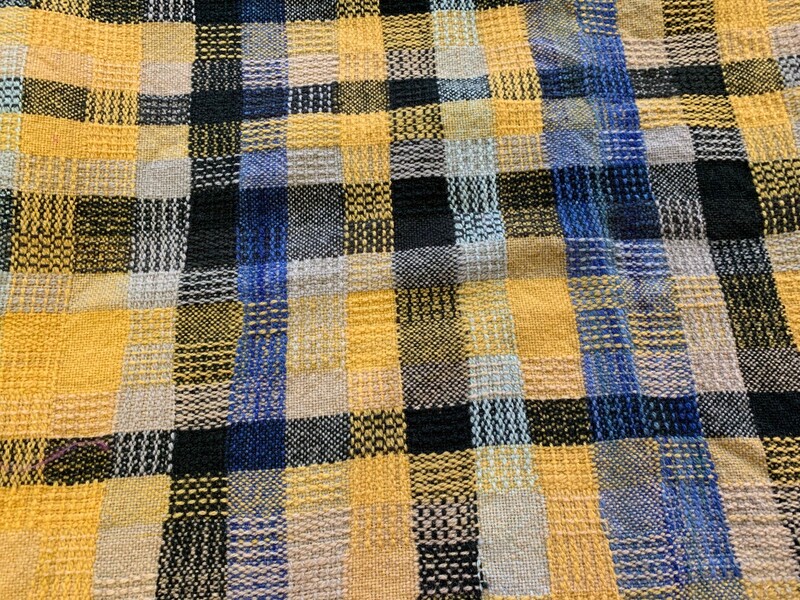
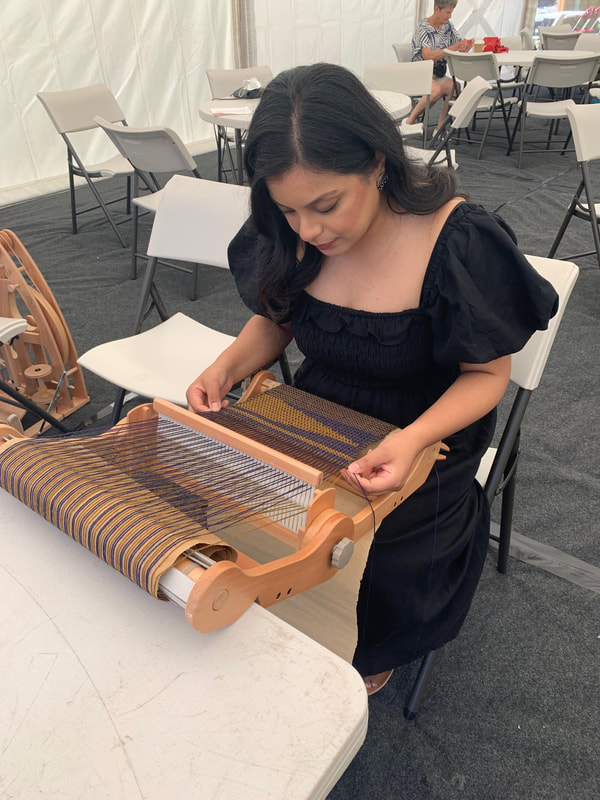
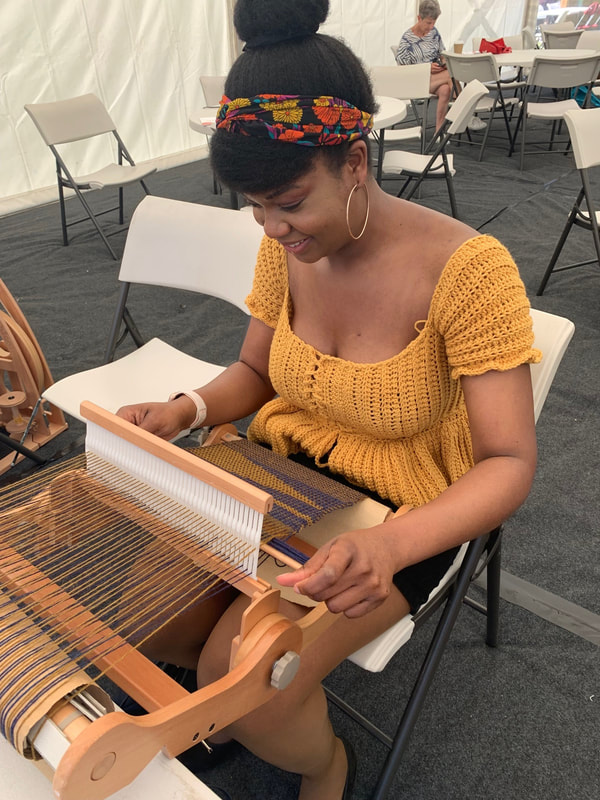
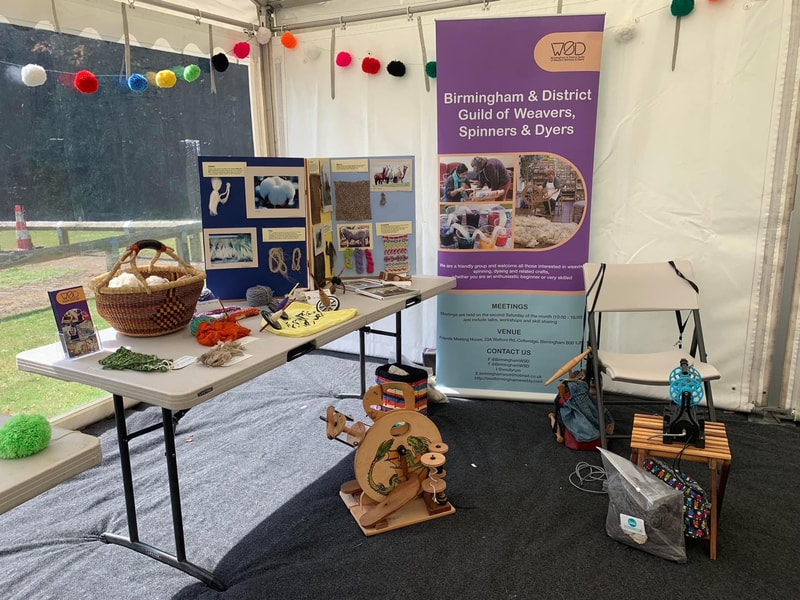
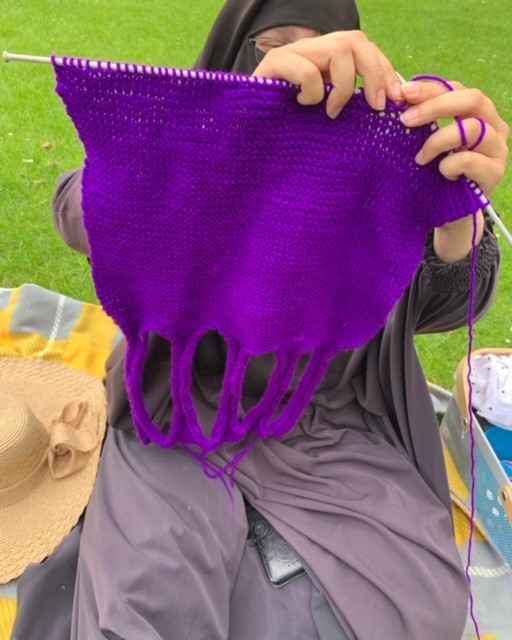
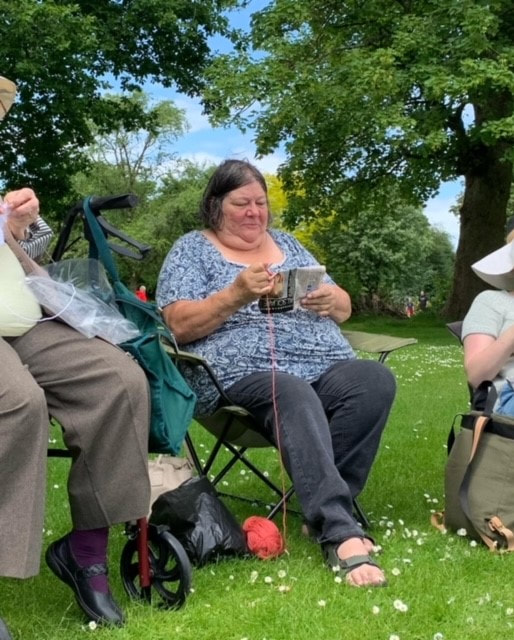
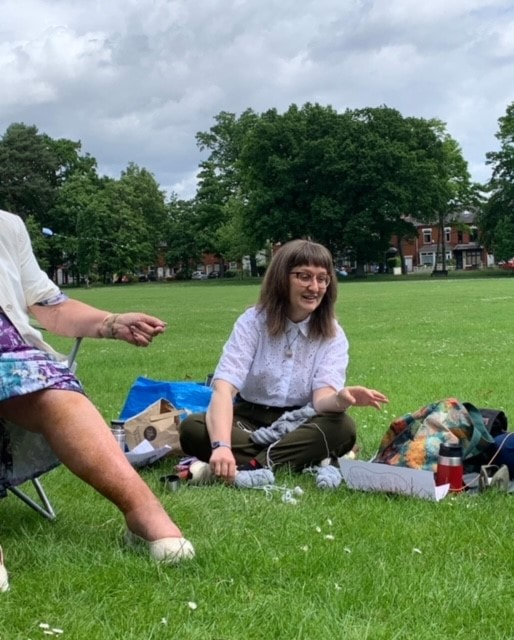
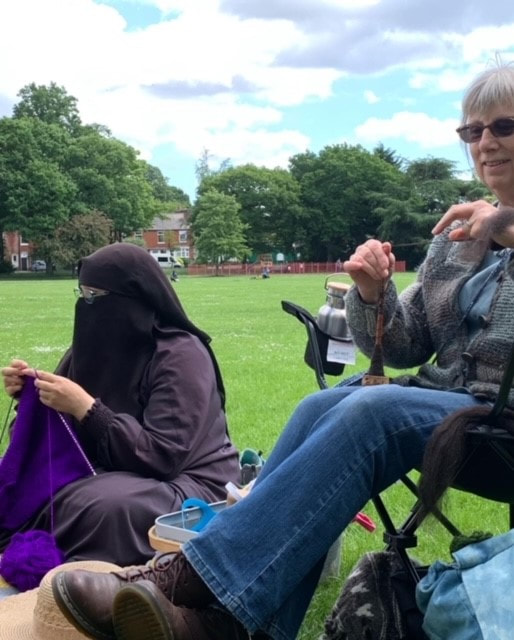
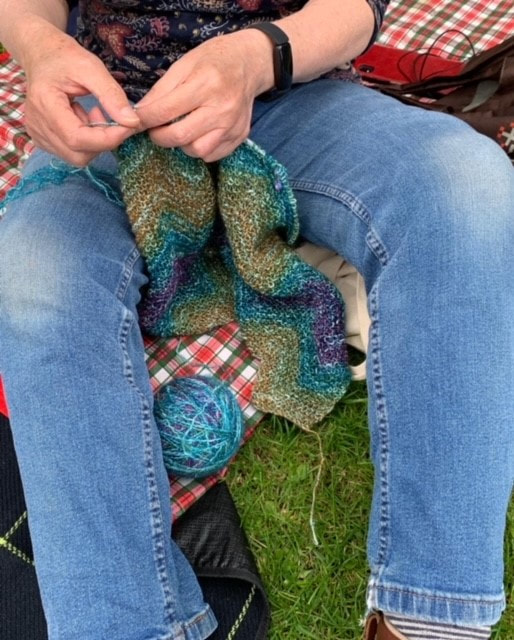
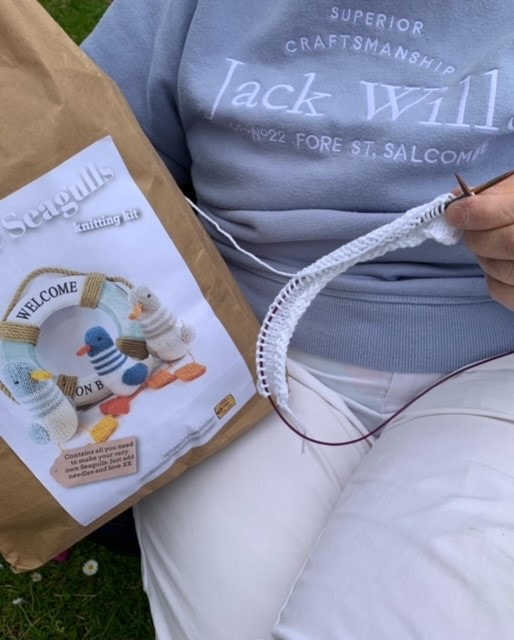
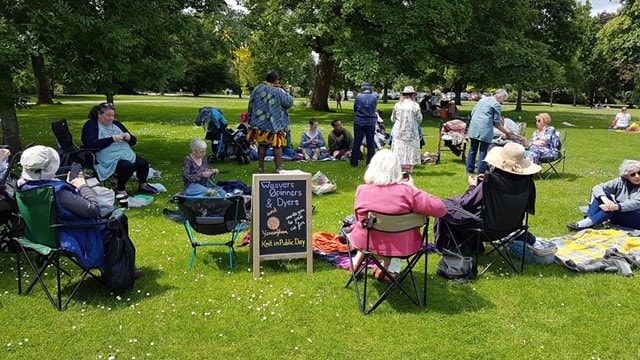
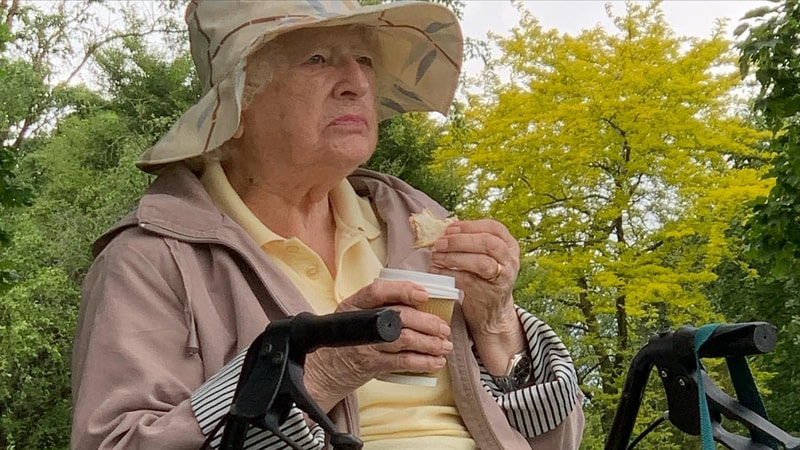
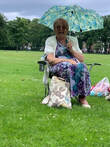
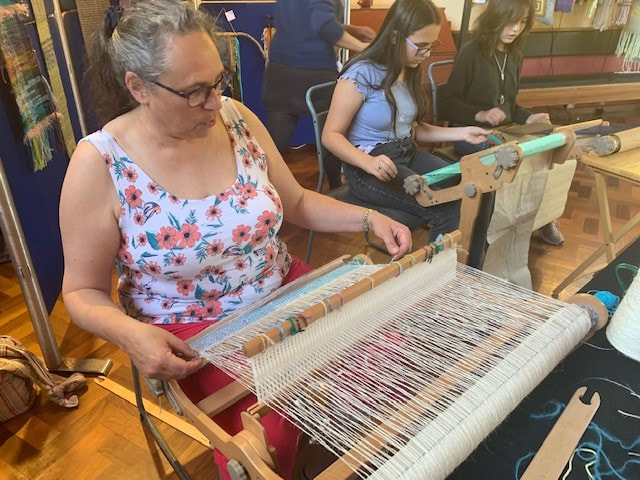
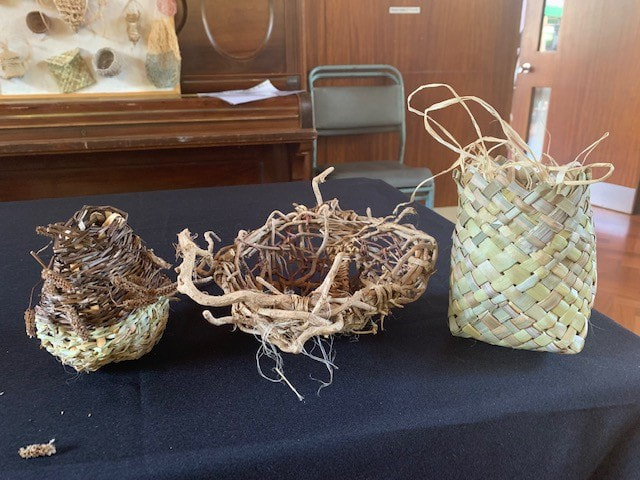
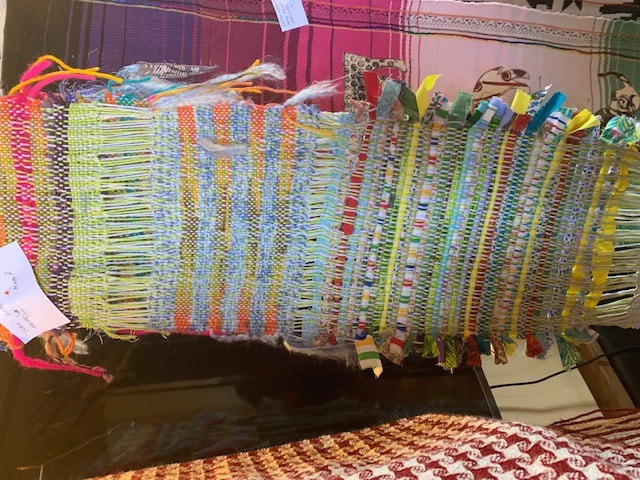
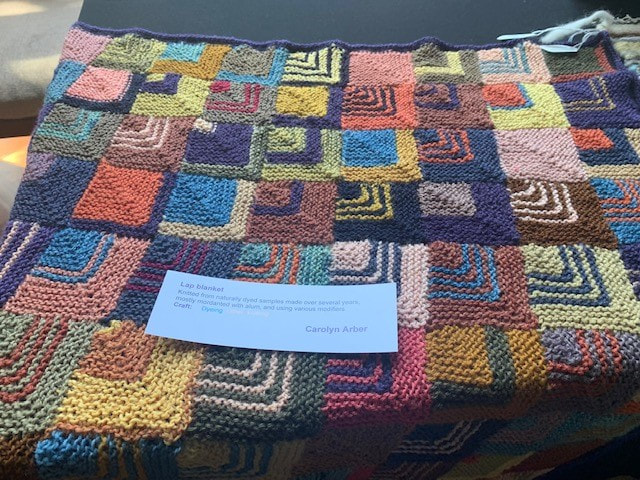
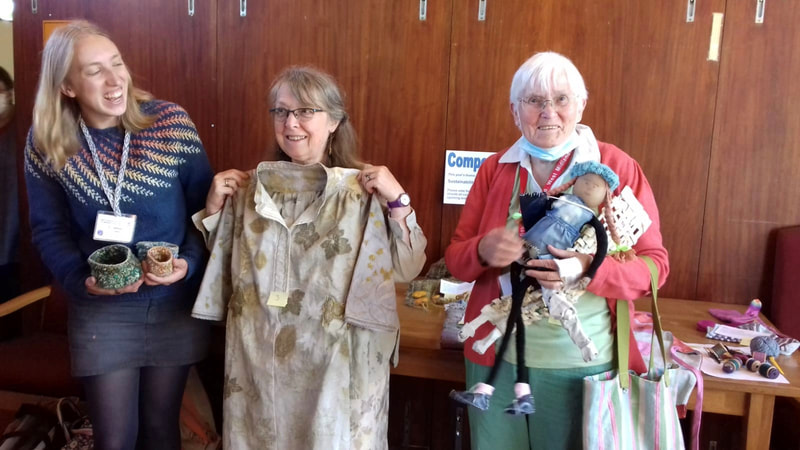
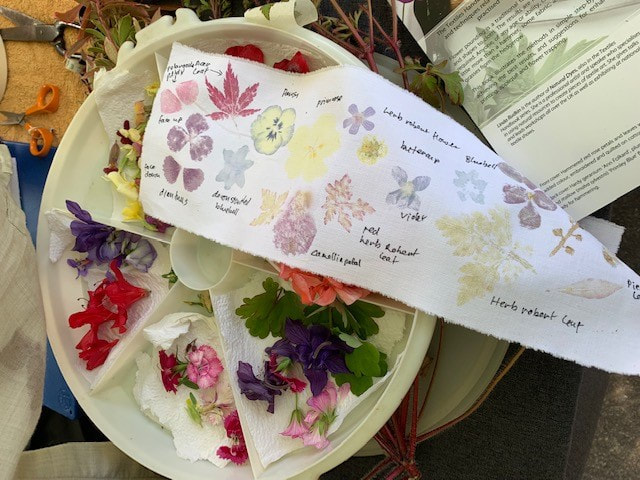
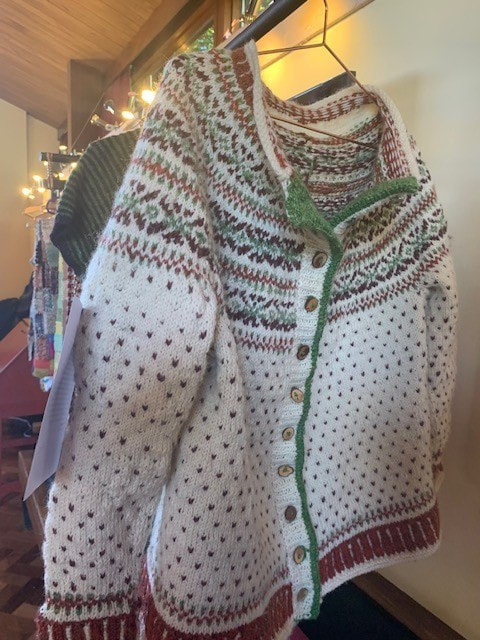
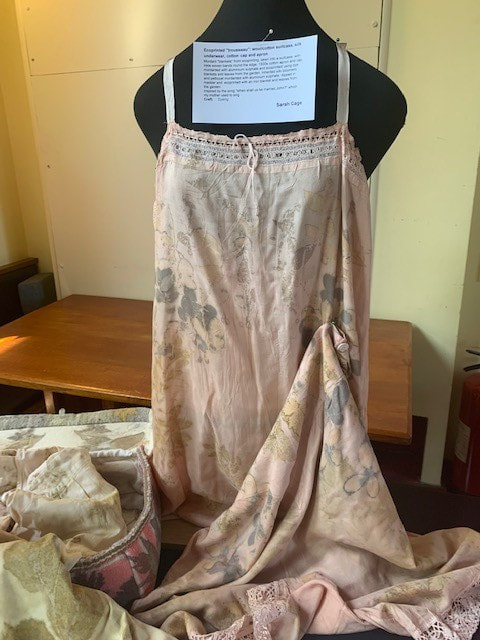
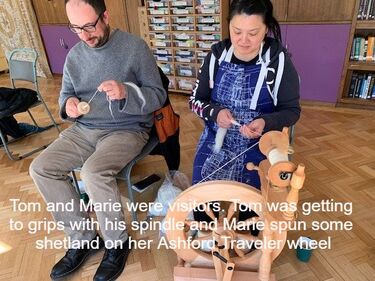
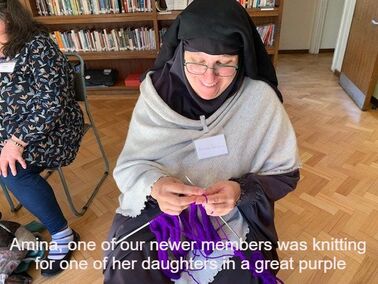
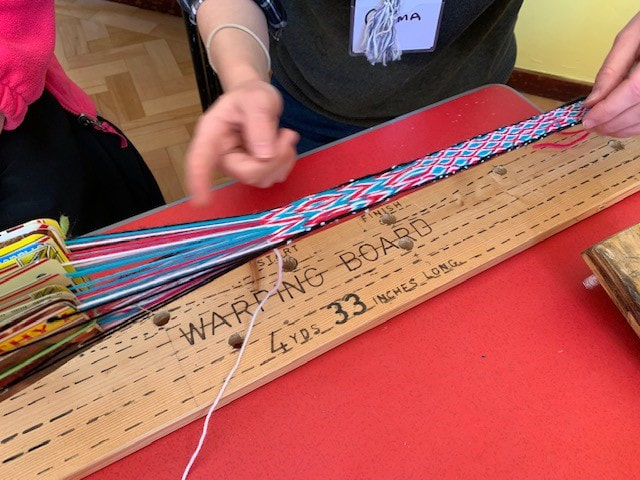
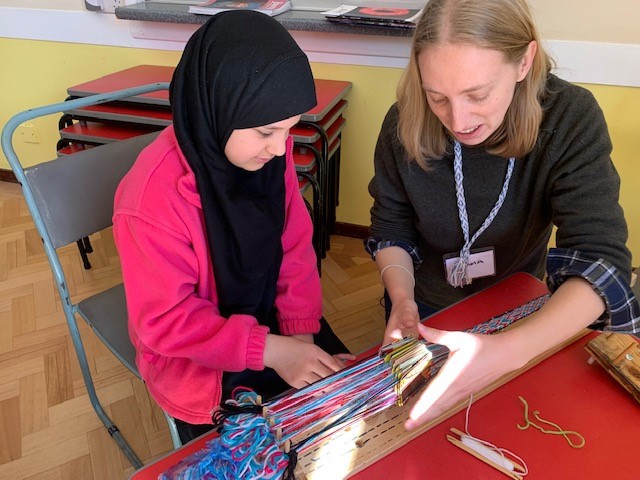
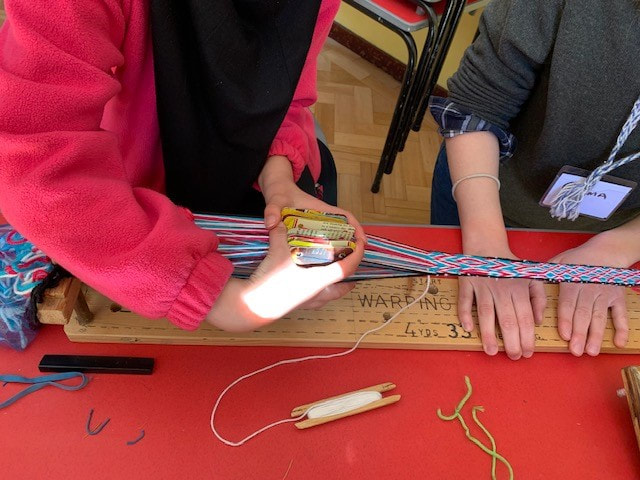
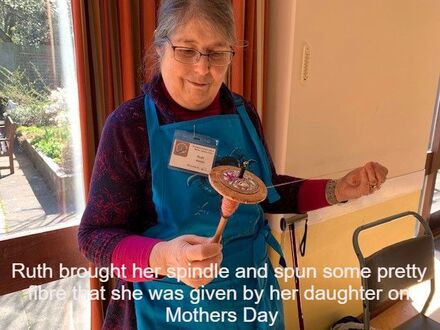
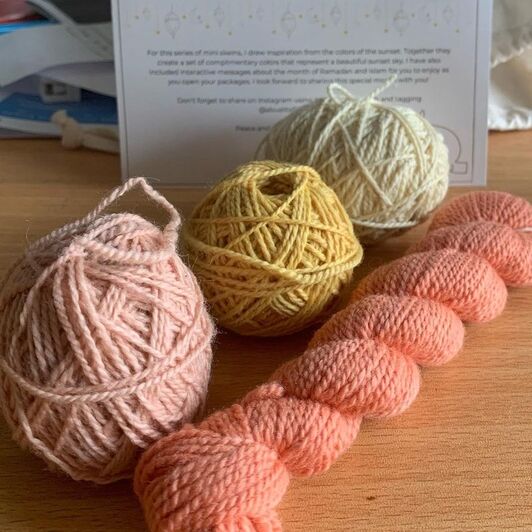
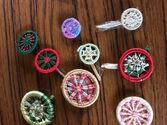
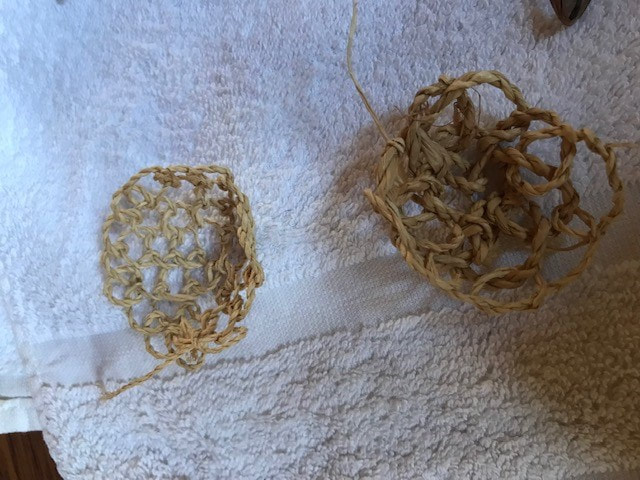
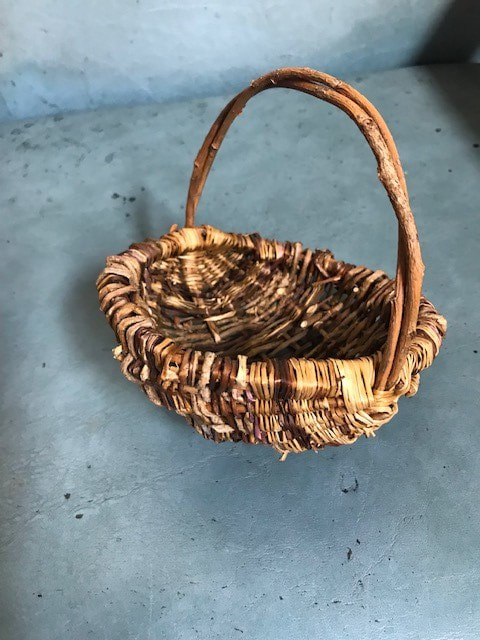
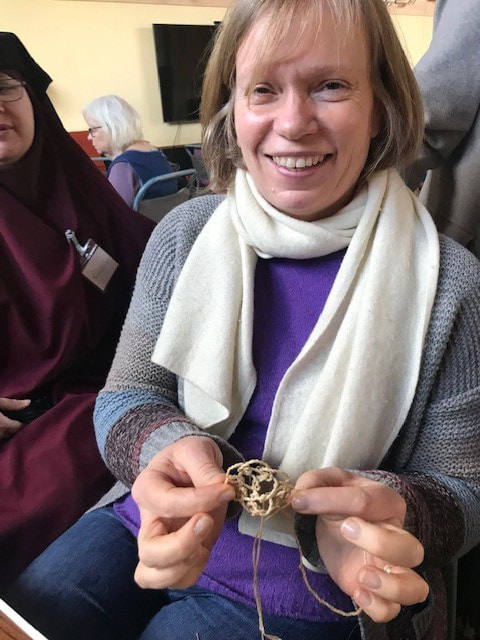
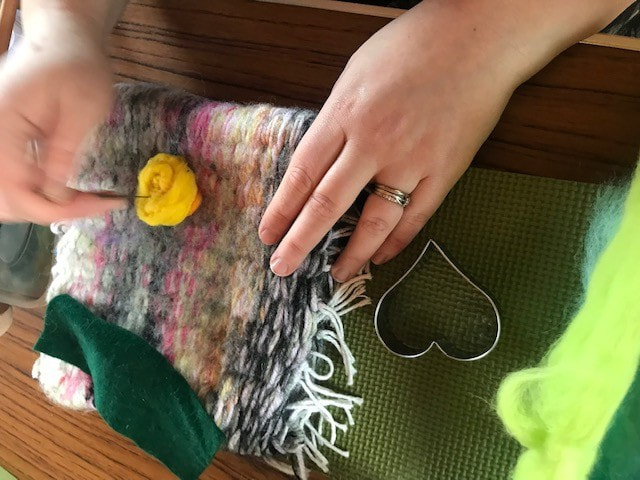
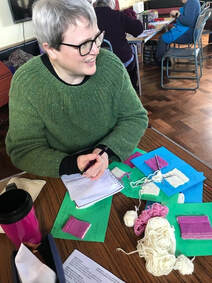
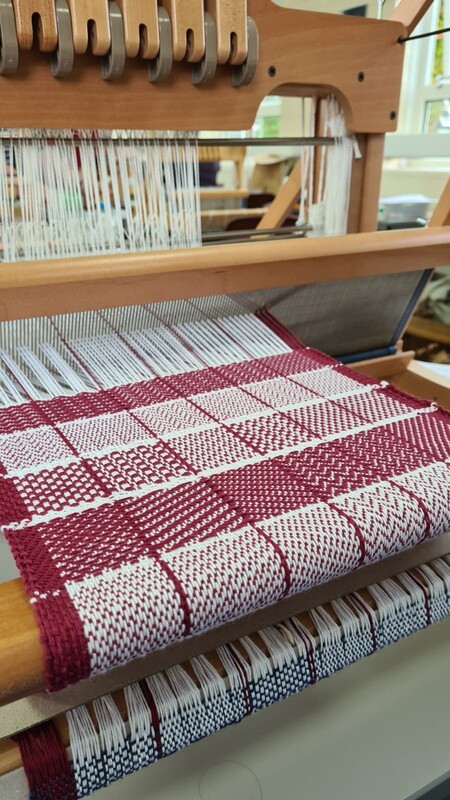
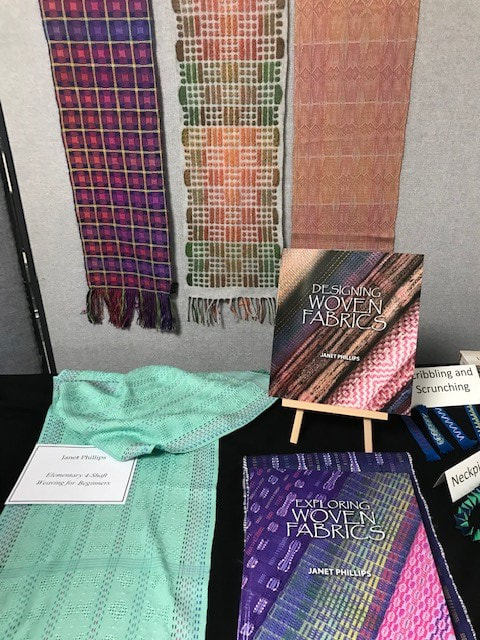
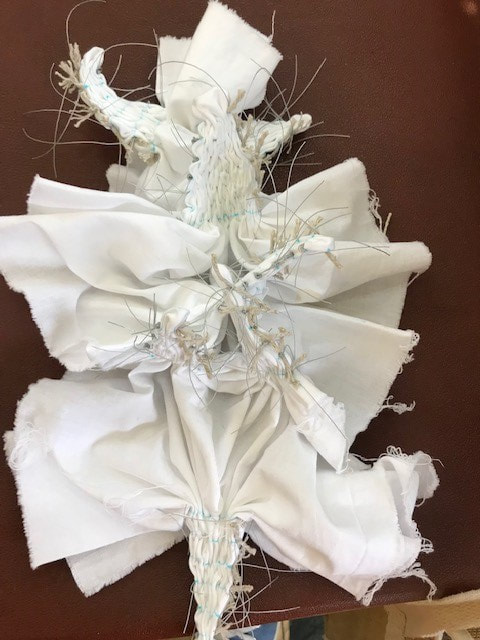
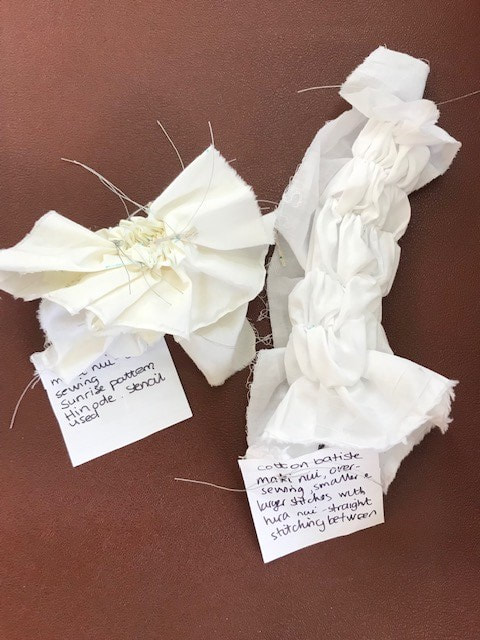
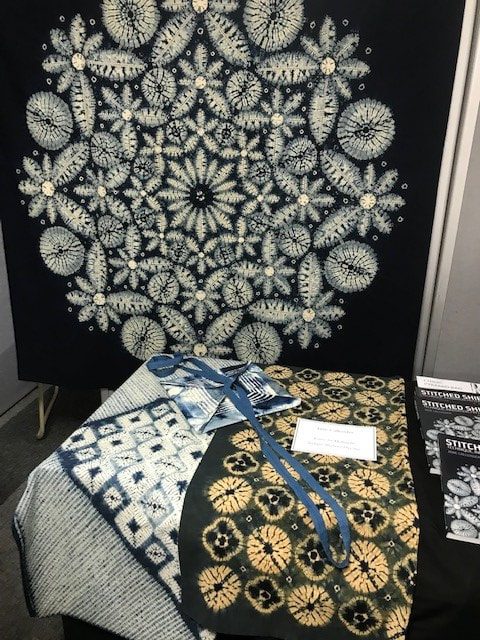
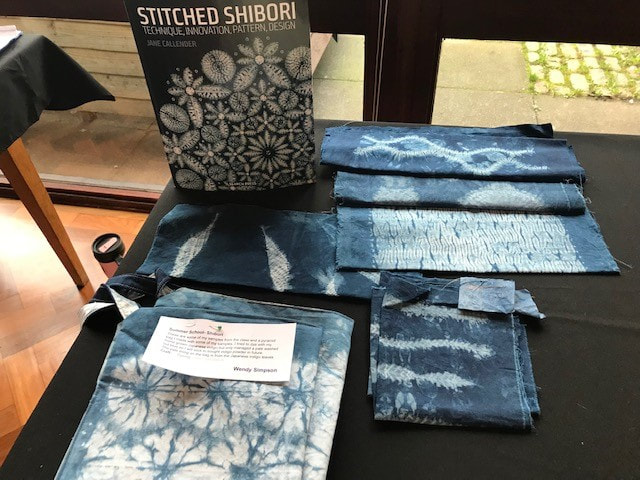
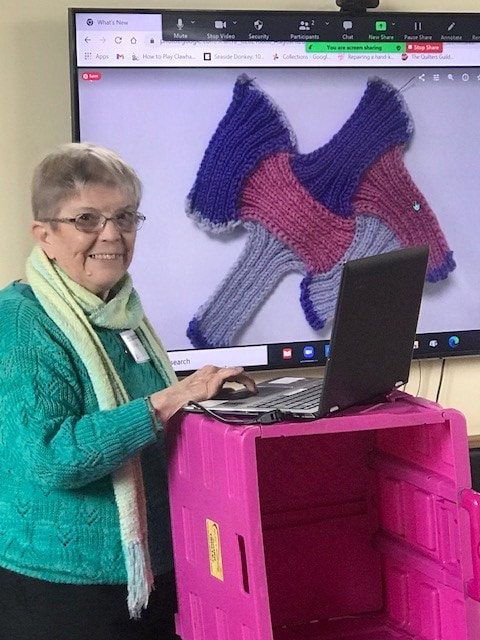
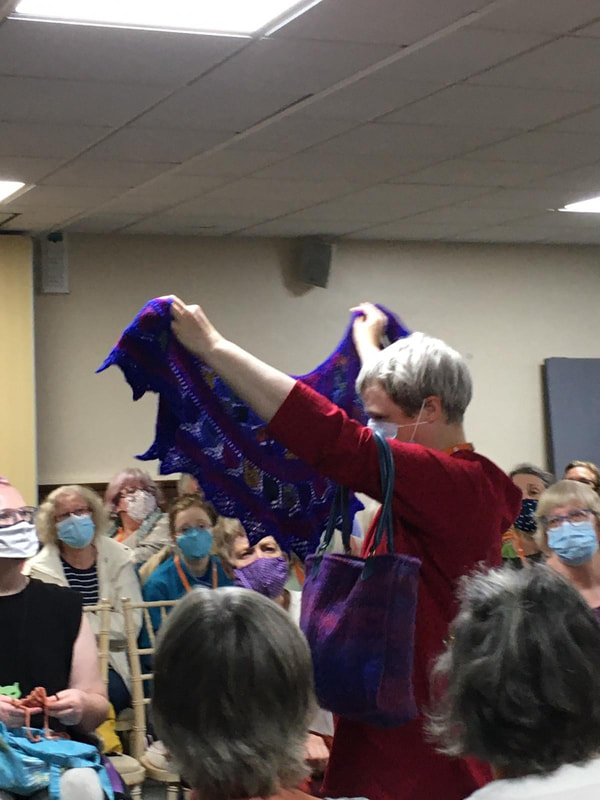
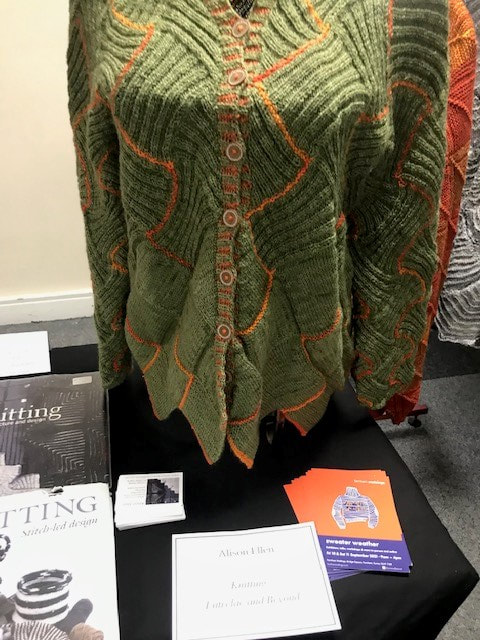
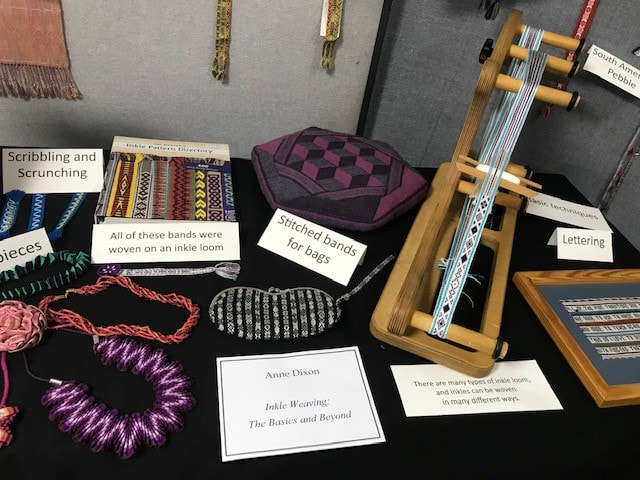
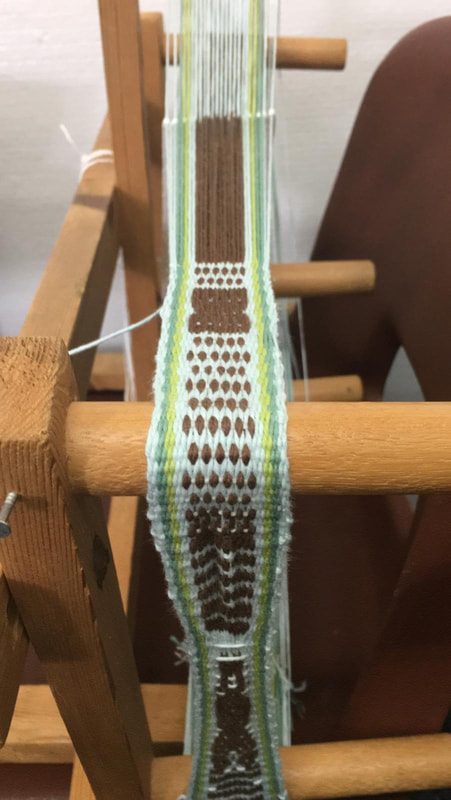
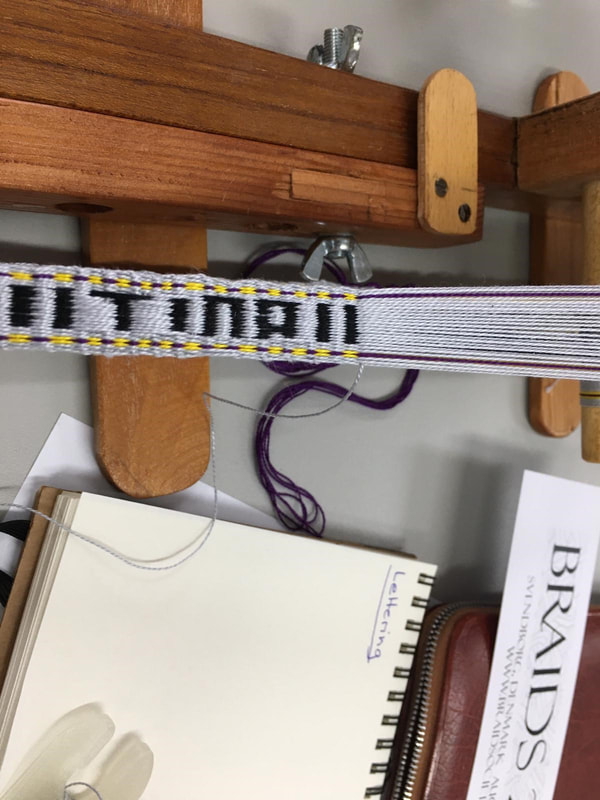
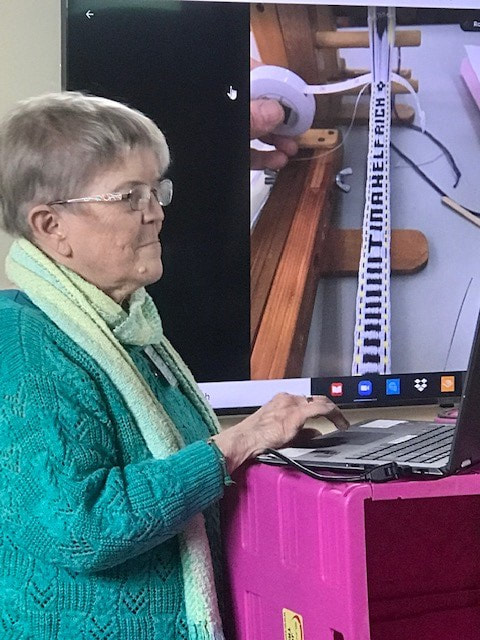
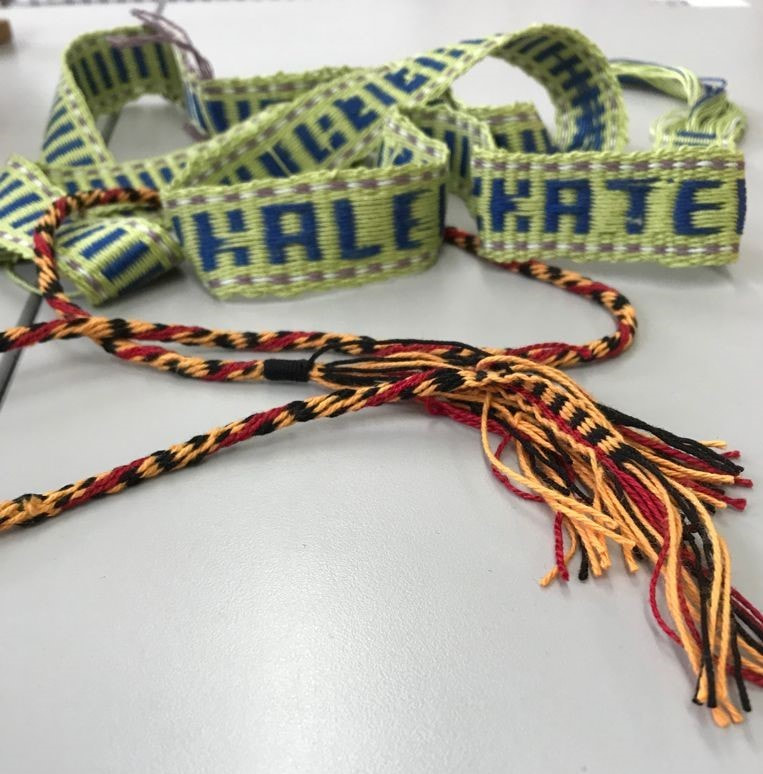
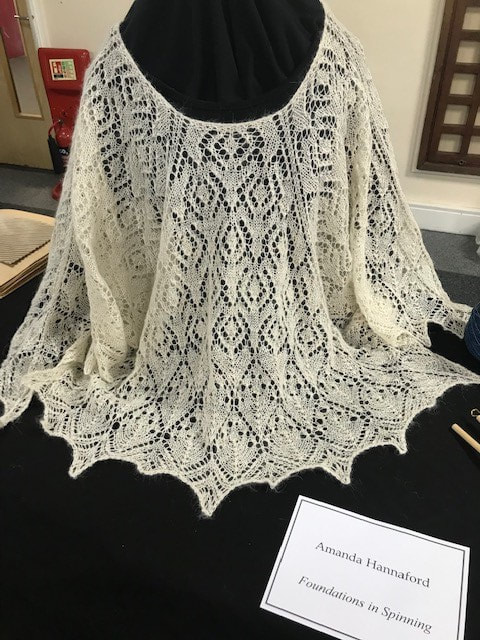
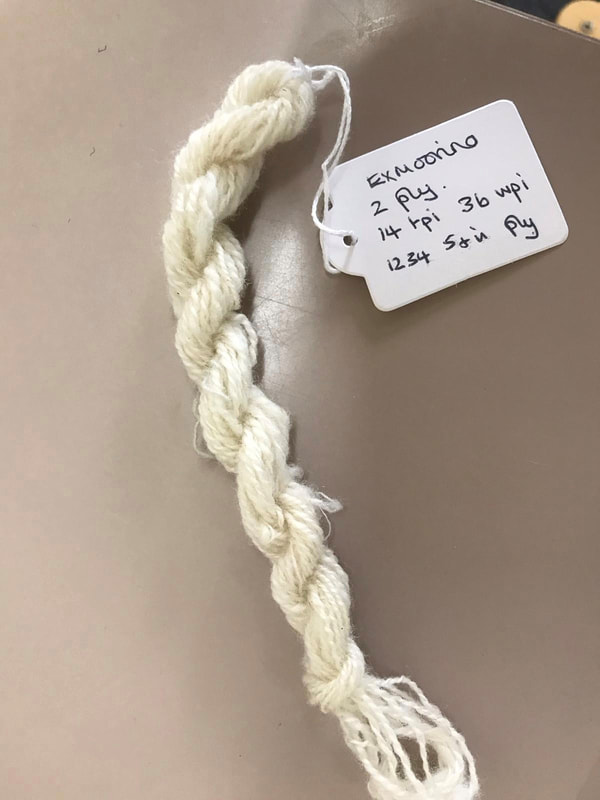
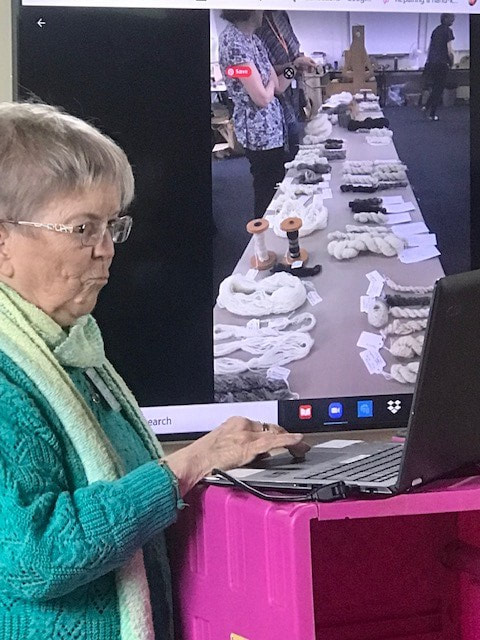
 RSS Feed
RSS Feed
